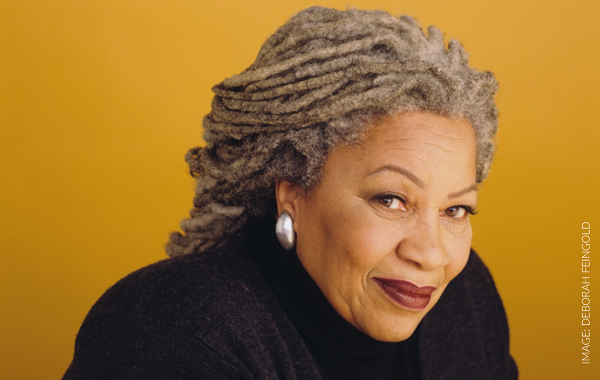THIS WEEK’S MUSE

TONI MORRISON
“I’m a believer in the power of knowledge and the ferocity of beauty, so from my point of view, your life is already artful – waiting, just waiting for you to make it art.”
Toni Morrison was an acclaimed American novelist whose works continue to be widely praised for addressing the harsh consequences of racism in the United States and for her perceptive examination of the Black experience—particularly for females—in contemporary culture.
Morrison was born in 1931 and raised in Lorain, Ohio, a small city on the southern shore of Lake Erie. Her parents instilled in her a strong sense of heritage and language through the telling of traditional African American folktales, ghost stories, and singing songs. She frequently read as a child, later siting favorites as Jane Austen and Leo Tolstoy.
Morrison graduated from Howard University in 1953 with a B.A. in English and a master’s degree in American Literature from Cornell University two years later.
In 1967, she became the first black woman senior editor in the fiction department at Random House, New York City. In this capacity, she began to play a vital role in bringing Black literature into the mainstream, a role that would grow as she moved into writing professionally.
Her first novel, The Bluest Eye—published in 1970—was written while working at Random House and bringing up her two young children alone (she was divorced in 1964).
She developed the style for which she became known, writing characterized by epic themes, descriptive dialogues, and rich depictions of Black American culture. But skill and creativity aside, the ambition of being a writer presented a very practical challenge.
In order to write effectively, Morrison had to find the time around her professional and family life.
Her solution was simple, if arduous. She would start writing around 3am, giving her a few quiet hours to work before her children woke. Though demanding, she found this approach was eventually her preference, making it work by finding simple rituals like making coffee to drink as she watched the sunrise. It was in this way that she wrote her first novel.
When starting to write, Morrison would prefer to use a pencil. Only later, once she had the shape on an idea or a direction, would she move to a word processor or computer. “Everything I write for the first time,” she said, “Is written with a pencil…My preference is for yellow legal pads and a nice number two pencil.”
For all the creativity this initial analog process gave her, early results could also be inconsistent or discordant. So, when she shifted to a machine, her approach changed, and there, Morrison could concentrate more directly on structure and construction, the architecture of her written language.
“I work very hard in subsequent revisions to remove the writerly-ness from it, to give it a combination of lyrical, standard, and colloquial language. To pull all these things together into something that I think is much more alive and representative.”
While initially, the pencil was the tool by which Morrison could get inside an idea or approach, the inconsistent language that came with it needed to be tempered into something more uniform and perhaps less personal.
As the work developed, she would increasingly see the words in the hands of the future reader, helping her shape her language until she felt happy with what the “reader will experience.”
For Morrison, written language was at the heart of her creativity and art. “We die. That may be the meaning of life,” she said. “But we do language. That may be the measure of our lives.”
She published eleven novels, plus plays, short stories, poetry. With one of her sons, she wrote several children’s books. She won a mountain of awards, including the Pulitzer Prize in 1988 and the Nobel Prize in Literature in 1993. Considered one of the greatest American writers of the last hundred years, Morrison died in New York City in 2019.
“Writing is really a way of thinking – not just feeling but thinking about things that are disparate, unresolved, mysterious, problematic, or just sweet.”
HAPPENINGS
Six Tuesdays, beginning February 1, 2022,
from 6–9pm

The Beatles Go to The Movies
With Tony Raine & Tim Miller
The Beatles, and their music, just don’t get old. It’s been almost 60 years since the Fab Four took America by storm, and they continue to topmost lists of the greatest rock acts of all time.
Not only did John, Paul, George, and Ringo make their mark through their recordings, concert performances, and yes, even a cartoon TV series, they appeared in or inspired several movies.
With that in mind, movie critic Tim Miller and music producer Tony Raine present “The Beatles Go to the Movies,” a fun and informal course that will trace the history of The Beatles through their films.
$190 – Member, $240 – Non-Member
